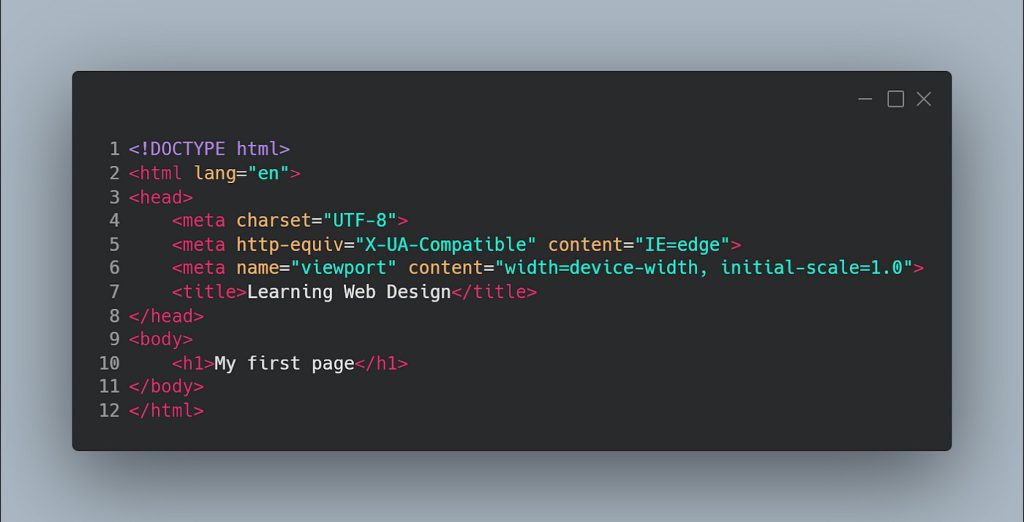Introduction
Ever wondered how websites work? Every time you visit a webpage, a combination of HTML, CSS, and JavaScript is working behind the scenes to create the layout, colors, animations, and interactivity.
Whether you’re looking to build your own website or just understand how the web works, this guide will explain the three core web technologies in a simple and beginner-friendly way. 🚀
By the end of this article, you’ll:
✅ Understand how websites work behind the scenes
✅ Learn the role of HTML, CSS, and JavaScript
✅ Write a basic webpage from scratch
Let’s dive in! 🎯
1. How Websites Work: A Simple Breakdown 🏗️
Every website you visit is made up of three core components:
🔹 1. HTML (HyperText Markup Language) 🏛️
✅ The structure of a webpage (like the walls of a building).
✅ Defines headings, paragraphs, images, buttons, and links.
💡 Example:
html ------ <h1>Welcome to My Website</h1> <p>This is a simple webpage.</p>
🔹 2. CSS (Cascading Style Sheets) 🎨
✅ The design and layout (colors, fonts, positioning).
✅ Makes a website beautiful and visually appealing.
💡 Example:
css
------
h1 {
color: blue;
font-size: 24px;
}
🔹 3. JavaScript (JS) ⚡
✅ Adds interactivity (buttons, animations, pop-ups).
✅ Lets users interact with the webpage dynamically.
💡 Example:
js
------
document.querySelector("h1").innerHTML = "Hello, World!";
How These Three Work Together 🔄
When you visit a website, your browser:
1️⃣ Loads the HTML file → Creates the webpage structure 🏗️
2️⃣ Loads the CSS file → Styles the page 🎨
3️⃣ Loads the JavaScript file → Adds interactivity ⚡
💡 Analogy: Think of a website like a house:
- HTML = The foundation and walls 🏛️
- CSS = The paint, furniture, and decorations 🎨
- JavaScript = The lights, doors, and moving parts ⚡
2. Creating Your First Webpage 🌍
Let’s build a basic webpage using HTML, CSS, and JavaScript.
Step 1: Create an HTML File (index.html)
html
------
<!DOCTYPE html>
<html lang="en">
<head>
<meta charset="UTF-8">
<meta name="viewport" content="width=device-width, initial-scale=1.0">
<title>My First Website</title>
<link rel="stylesheet" href="styles.css">
</head>
<body>
<h1>Welcome to My Website</h1>
<p>This is my first webpage using HTML, CSS, and JavaScript!</p>
<button onclick="changeText()">Click Me</button>
<script src="script.js"></script>
</body>
</html>
✅ This creates a basic webpage with a button.
Step 2: Add CSS for Styling (styles.css)
css
------
body {
font-family: Arial, sans-serif;
text-align: center;
background-color: #f4f4f4;
}
h1 {
color: blue;
}
button {
padding: 10px 20px;
font-size: 16px;
background-color: green;
color: white;
border: none;
cursor: pointer;
}
✅ This styles the webpage, making it look better!
Step 3: Add JavaScript for Interactivity (script.js)
js
------
function changeText() {
document.querySelector("h1").innerHTML = "You clicked the button!";
}
✅ When the button is clicked, JavaScript changes the text.
3. How a Website Works Behind the Scenes 🔍
When you type a website address (e.g., www.example.com), here’s what happens:
1️⃣ Your browser sends a request to a web server.
2️⃣ The server sends back HTML, CSS, and JavaScript files.
3️⃣ Your browser renders the HTML and applies CSS styles.
4️⃣ JavaScript runs and adds interactivity.
💡 Example:
- Google Chrome, Firefox, and Safari interpret the HTML, CSS, and JS files to display the website.
4. Next Steps: Becoming a Web Developer 🚀
Now that you understand the basics, here’s what you can do next:
✅ Learn More HTML → Forms, tables, lists, images.
✅ Explore CSS → Animations, flexbox, grid layouts.
✅ Practice JavaScript → Interactive elements, event handling.
✅ Build Projects → Make a personal portfolio, blog, or game!
📚 Recommended Learning Resources:
🌟 Challenge: Try adding a hover effect on the button using CSS! 🎨
Conclusion 🏁
Now you know how websites work! HTML, CSS, and JavaScript work together to create every webpage you see online.
💡 Key Takeaways:
✅ HTML = Structure 🏛️
✅ CSS = Styling 🎨
✅ JavaScript = Interactivity ⚡
🔹 Ready to build your own website? Start coding today! 🚀💻


